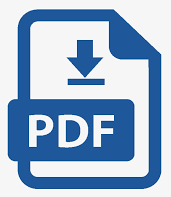Cirugía ablativa del núcleo subtalámico en la Enfermedad de Parkinson. Consideraciones necesarias
Palabras clave:
cirugía ablativa del núcleo subtalámico, Tratamiento quirúrgico de la Enfermedad de ParkinsonResumen
La enfermedad de Parkinson según la Organización Mundial de Salud, en el año 2016, afectó una persona por cada 100 mayores de 60 años, siendo en cifras absolutas 6,3 millones de personas, y para el año 2030 serán aproximadamente 12 millones de personas en todo el mundo con dicha patología. Este desorden neurodegenerativo, caracterizado por la degradación nigro-estriatal y potenciación de la vía indirecta del circuito motor de los Ganglios Basales sumado al acúmulo de Cuerpos de Lewy en diversas estructuras del Sistema Nervioso Central, afecta progresiva e inevitablemente la calidad de vida de los pacientes, los procederes ablativos del núcleo subtalámico constituyen una alternativa que propicia efecto y seguridad probada en el control de los síntomas de esta enfermedad. Por lo cual se decide describir la ablación del Núcleo subtalámico como tratamiento de la Enfermedad de Parkinson avanzada.
Descargas
Citas
2.Arredondo-Blanco K, Zerón-Martínez R, Rodríguez-Violante M,et al. Breve recorrido histórico de la enfermedad de Parkinson a 200 años de su descripción. Gac Med Mex [Internet]. 2018[citado 01/12/2019];154(6):719-726.Disponible en:https://pmlegacy.ncbi.nlm.nih.gov/pubmed/?term=Breve+recorrido+hist%C3%B3rico+de+la+enfermedad+de+Parkinson+a+200+a%C3%B1os+de+su+descripci%C3%B3n
3.Hasegawa M, Nonaka T, Masuda-Suzukake M. Prion-like mechanisms and potential therapeutic targets in neurodegenerative disorders. Pharmacol Ther. 2017 ;172:22-33.Citado en PubMed: PMID: 27916654.
4.Parkinson y yo, Organización Mundial de la Salud (OMS) . Parkinson y yo, Acerca del Parkinson [Internet]. Buenos Aires, Argentina: OMS [ citado 01/12/2019];2018 . Disponible en: http://terapiaparkinson.com/testimonial-view/organizacion-mundialde-la-salud-oms/
5.OPS. Trastornos neurológicos: un serio desafío para la salud pública en las Américas y en todo el mundo[Internet]. Estados Unidos: Organización Panamericana de la Salud [citado el 01/12/2019];2018. Disponible en: http://www.paho.org/hq/index.php?option=com_content&view=article&id=240%3A2008-trastornos-neurologicos-un-seriodesafio-salud-publica-americas-todo-mundo&catid=916%3Ariskfactors&Itemid=40595&lang=es
6.Condor I, Atencio-Paulino J, Contreras-Cordova CR. Características clínico epidemiológicas de la Enfermedad de Parkinson en un Hospital nacional de la Sierra Peruana. Rev Fac Med Hum [Internet]. 2019 [citado el 01/12/2019];19(4):14-21.Disponible en: http://www.scielo.org.pe/scielo.php?script=sci_arttext&pid=S2308-05312019000400004
7.Benito-Leon J. Epidemiologia de la enfermedad de Parkinson en España y su contextualizacion mundial. Rev Neurol. 2018;66(4):125-134.Citado en PubMed; PMID: 29435969.
8.Ricardo Y, Pavon N, Alvarez L, et al. Long-term effect of unilateral subthalamotomy for Parkinson's disease. J Neurol Neurosurg Psychiatry. 2019 Dec;90(12):1380-1381.Citado en PubMed: PMID: 31085584.
9.Galvan A, Smith Y. Anatomy and Synaptic Connectivity of the Basal Ganglia. In: Winn HR. Yumans and Winn Neurological Surgery[Internet]. 7ma Ed. Philadelphia: ELSEVIER. [citado el 01/12/2019]; 2017.p. 521-539.Disponible en: https://www.elsevier.com/books/youmans-and-winn-neurological-surgery-4-volume-set/winn/978-0-323-28782-1
10.Jellinger KA. Neuropathology of Movement Disorders. In: Winn HR. Yumans and Winn Neurological Surgery[Internet]. 7ma Ed. Philadelphia: ELSEVIER[citado el 01/12/2019]; 2017.p. 540-80. Disponible en : https://www.elsevier.com/books/youmans-and-winn-neurological-surgery-4-volume-set/winn/978-0-323-28782-1
11.Martínez-Fernández R, Gasca-Salas C, Sánchez-Ferro A Actualización en la Enfermedad de ParkinsonRev Med Clin Condes[Internet]. [Citado en 10/03/2019]; 27(3): 363-79.Disponible en:https://www.sciencedirect.com/science/article/pii/S0716864016300372
12.Méndez-Herrera C. El núcleo subtalámico en la fisiopatología de la enfermedad de Parkinson y su rol como diana quirúrgica. Rev Chil Neuro-Psiquiatr [Internet]. [Citado 12/11/ 2011];49(1).Disponible en:https://scielo.conicyt.cl/scielo.php?script=sci_abstract&pid=S0717-92272011000100008&lng=es&nrm=iso
13.Salva Camaño SN. Historia de la estereotaxia, la braquiterapia y la radiocirugía en Cuba. Rev Méd Electrón [Internet]. [citado en 12/10/2019]; 33(7). Disponible en:
http://www.revmedicaelectronica.sld.cu/index.php/rme/article/view/904/pdf
14.Wichmann, DeLong MR. Rationale for Surgical Interventions in Movement Disorders. In: Winn HR. Yumans and Winn Neurological Surgery. 7ma Ed. Philadelphia: ELSEVIER [Internet];2017. p. 565-570. https://www.elsevier.com/books/youmans-and-winn-neurological-surgery-4-volume-set/winn/978-0-323-28782-1
15.Cho C, Isaias IU, Tagliati M. Patient Selection Criteria for Deep Brain Stimulation in Movement Disorders. In: Winn HR. Yumans and Winn Neurological Surgery. 7ma Ed. Philadelphia: ELSEVIER [Internet]. [citado en 12/10/2019]; 2017. p. 586-595. Disponible en : https://www.elsevier.com/books/youmans-and-winn-neurological-surgery-4-volume-set/winn/978-0-323-28782-1
16.Schuepbach WM, Rau J, Knudsen K,et al. Neurostimulation for Parkinson's disease with early motor complications. N Engl J Med. 2013 Feb 14;368(7):610-22. Citado en PubMed ;PMID: 23406026.
17.Deuschl G, Follett KA, Luo P, et al. Comparing two randomized deep brain stimulation trials for Parkinson's disease. J Neurosurg. 2019 Apr 5:1-9.Citado en PubMed; PMID: 30952118.
18.Hariz M, Blomstedt P. Surgical Management of Tremor. In: Winn HR. Yumans and Winn Neurological Surgery[Internet]. 7ma Ed. Philadelphia: ELSEVIER [citado en 12/10/2019]; 2017. p. 596-601. Disponible en : https://www.elsevier.com/books/youmans-and-winn-neurological-surgery-4-volume-set/winn/978-0-323-28782-1
19.Gross RE, Stern MA, Lazarus JT. Ablative Procedures for Parkinson’s Disease. In: Winn HR. Yumans and Winn Neurological Surgery[Internet]. 7ma Ed. Philadelphia: ELSEVIER [citado en 12/10/2019]; 2017. p. 610-618. Disponible en : https://www.elsevier.com/books/youmans-and-winn-neurological-surgery-4-volume-set/winn/978-0-323-28782-1
20.Odekerken VJ, Boel JA, Schmand BA, et al. NSTAPS study group. GPi vs STN deep brain stimulation for Parkinson disease: Three-year follow-up. Neurology. 2016 Feb 23;86(8):755-61. Citado en PubMed; PMID: 26819458.
21.Panov FE, Larson P, Martin A . Deep Brain Stimulation for Parkinson’s Disease[Internet]. In: Winn HR. Yumans and Winn Neurological Surgery. 7ma Ed. Philadelphia: ELSEVIER [citado en 12/10/2019]; 2017. p. 531-545. Disponible en : https://www.elsevier.com/books/youmans-and-winn-neurological-surgery-4-volume-set/winn/978-0-323-28782-1
22.Johnson LA, Vitek JL. Deep Brain Stimulation: Mechanismis of Action[Internet]. In: Winn HR. Yumans and Winn Neurological Surgery. 7ma Ed. Philadelphia: ELSEVIER [citado en 12/10/2019];2017. p. 635-646. Disponible en : https://www.elsevier.com/books/youmans-and-winn-neurological-surgery-4-volume-set/winn/978-0-323-28782-1
23.Rapoport BI, Kaplitt MG. Emerging and Experimental Neurosurgical Treatments for Parkinson’s Disease[Internet]. In: Winn HR. Yumans and Winn Neurological Surgery. 7ma Ed. Philadelphia: ELSEVIER. [citado en 12/10/2019]; 2017. p. 660-664. Disponible en : https://www.elsevier.com/books/youmans-and-winn-neurological-surgery-4-volume-set/winn/978-0-323-28782-1
24.Taira T, Nakajima T, Ochiai T, et al. Thalamotomy for Focal Hand Dystonia. In: Winn HR. Yumans and Winn Neurological Surgery[Internet]. 7ma Ed. Philadelphia: ELSEVIER[citado en 12/10/2019]; 2017. p. 678-683. Disponible en : https://www.elsevier.com/books/youmans-and-winn-neurological-surgery-4-volume-set/winn/978-0-323-28782-1
25.Lipsman N, Schwartz ML, Huang Y, et al. MR-guided focused ultrasound thalamotomy for essential tremor: a proof-of-concept study. Lancet Neurol. 2013 May;12(5):462-8. Citado en PubMed; PMID: 23523144.
26.Schlesinger I, Eran A, Sinai A, et al. MRI Guided Focused Ultrasound Thalamotomy for Moderate-to-Severe Tremor in Parkinson's Disease. Parkinsons Dis. 2015;2015:219149. Citado en PubMed; PMID: 26421209.
Publicado
Cómo citar
Número
Sección
Licencia
La misma permite:
• Copiar y redistribuir el material publicado en cualquier medio o formato.
• Adaptar el contenido.
Esto se realizará bajo los siguientes términos:
• Atribuir los créditos de los autores e indicar si se realizaron cambios, en cuyo caso debe ser de forma razonable.
• Uso no comercial.
• Reconocer la revista donde se publica.
Se mantienen los derechos de autoría de cada artículo, sin restricciones.






